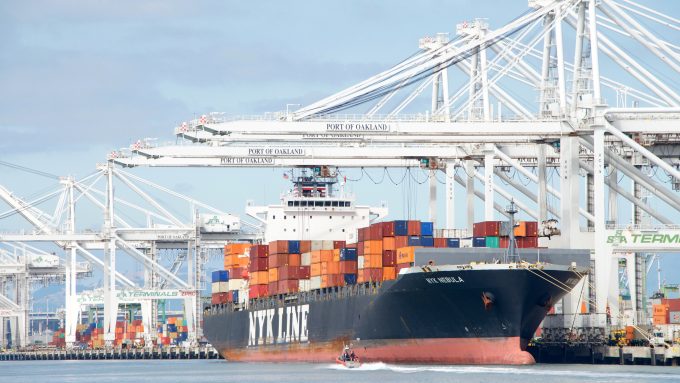Carriers take short-term rate hit and eye post-CNY demand surge
Ocean carriers do not expect consumer demand in North Europe to recover until at least ...

Ocean carriers could be forced to mothball more eastbound transpacific US west coast loops, and the vessels that operate them, to stop the extraordinary haemorrhaging of container spot rates which have halved in value in the past four weeks.
According to today’s reading of the China-US west coast component of the Freightos Baltic Index (FBX), the spot price for a 40ft plunged 20% this week, to $2,361, compared with a typical premium rate a year ago of $20,000, a two-thirds decline ...
Maersk Air Cargo sees volumes fall as it aims for 'margin in favour of revenue'
Keep our news independent, by supporting The Loadstar
Container spot rates diverge: to Europe still falling, but firmer to the US
Hapag-Lloyd won't take bookings if port congestion leaves cargo stranded
Ecommerce likely the front-runner in resurge of transpacific trade after deal
Volume surge and an early peak season? 'Don't celebrate too soon,' warning
China-US trade tariff pause could drive a rebound for transpacific rates
Airfreight players eye new routes as demand on the transpacific nosedives
Service chaos from trade ban with India a problem for Pakistan shippers
Airfreight rates ex-China 'loss-making', but hopes of a trade deal stay high
Indian coastal freight attracts major carriers, but regional tension disrupts
Serious threat to jobs in US logistics as tariffs cause economic 'stagflation'

Comment on this article
Alan Styles
October 09, 2022 at 8:04 amI’m not in the trade, but I like to follow the Shipping News.
Well, what can we say? It was reported in 2020/2021, that these same shippers/carriers made 10 years profit in 1 year! One TEU cost 4x more to ship compared to pre-pandemic prices. Talk about boot on the other foot.
I don’t think importers will have any compassion for these greedy shippers, particularly the smaller importers, who were being strangled by these outrageous prices.